Vietnam modern lacquer_ a look back
– Painter Hoang Dinh Tai –
- A little biography
Painting lacquer for many years, I feel that I basically use domestic materials to make art: Phu Tho paint, gold and silver in village (across the Red River). Paint is a mountain stone taken from nature and processed in a rough manner. Lacquer national characteristics in the basket of water is metal and soil metal old as my ancestors used to use.
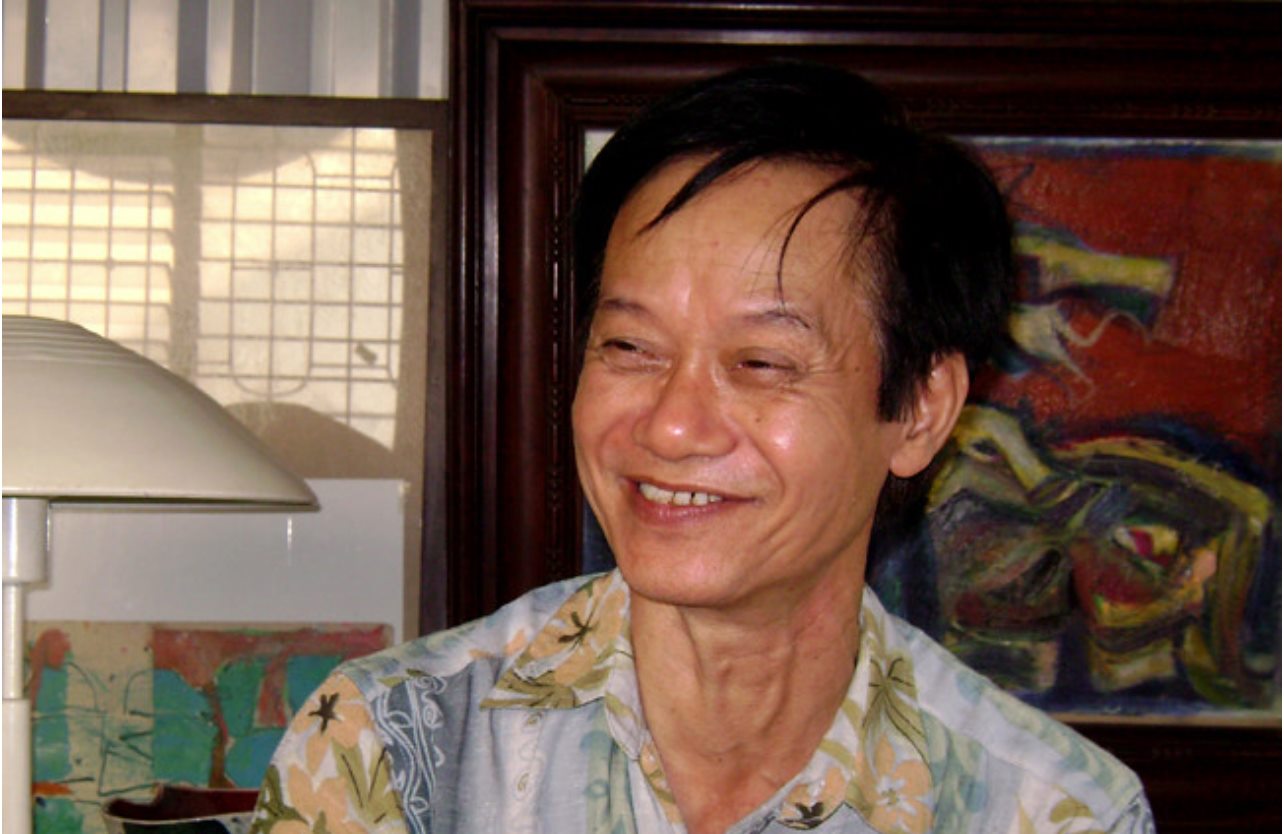
According to the Bezacier’s document, an employee of the Ancient Far East university said that when excavating the area of Buddhist temple in 1943, it was found outside Cao Bien stone tower about 866 to 870, pieces of Luffy cover decorated in black and red paint. Lacquer have had many centuries ago. The theory that lacquer we learned from other Chinese people was told by the Japanese, but so far there is no accurate evidence that the theory is true. Experimental data shows that in the life of Le Nhan Tong in 1443, Mr. Tran Thuong Cam, a predecessor painter of the Dong Son district, studied the new technology of the Chinese people (the group of potters and painters) of the Tong Dynasty who fled the Nguyen Dynasty and lived in exile in North Vietnam. He practiced early, trained many good craftsmen to renovate the palace and temple, he was awarded by the king to the rank of Duke. When he died, the villagers worshiped him as a worshiping god in Binh village, and Thuong Tin villages in Ha Dong province now. Every year, lacquer workers take June 13 of the lunar calendar as the anniversary of the death anniversary. Lacquer thrived through from the Le dynasty to Nguyen dynasty: 15th century to the 19th century.
In 1925, Indochina Fine Arts College was born in Hanoi. Vietnam lacquer is really mature, opening a new era for the fine arts of the country. An unique, new industry was born. It’s really fair that we have to give credit to the painter Victor Tardien (French) who is passionate about Vietnamese culture, Mr. J.Ingumbert, a professor who encouraged students to study lacquer, along with novices like Nguyen Gia Tri, Pham Hau, Tran Van Can, To Ngoc Van … successfully put this material into lacquer paintings. The school trained many talented painters, opening exhibitions at home and abroad: in 1931 in Vincennes Paris, in Rome in 1932, in Milan and Napler in 1934, in Brussels in 1935, in San Francisco in 1937. In 1942, for the first time, a gallery full of lacquer pantings of artist Nguyen Van Ty was displayed at the Hanoi Khai Tri Tien Duc association in the South. Lacquer institution was established in Thu Dau Mot, Binh Duong, a city where artists were originally from Hanoi. Since lacquer has flourished in all three regions, along with fine art articles, Vietnamese lacquer works are pride, astonishment and appreciation in many countries. The Vietnam Lacquer Painting Exhibition in 1958 in 12 European countries is a testament.
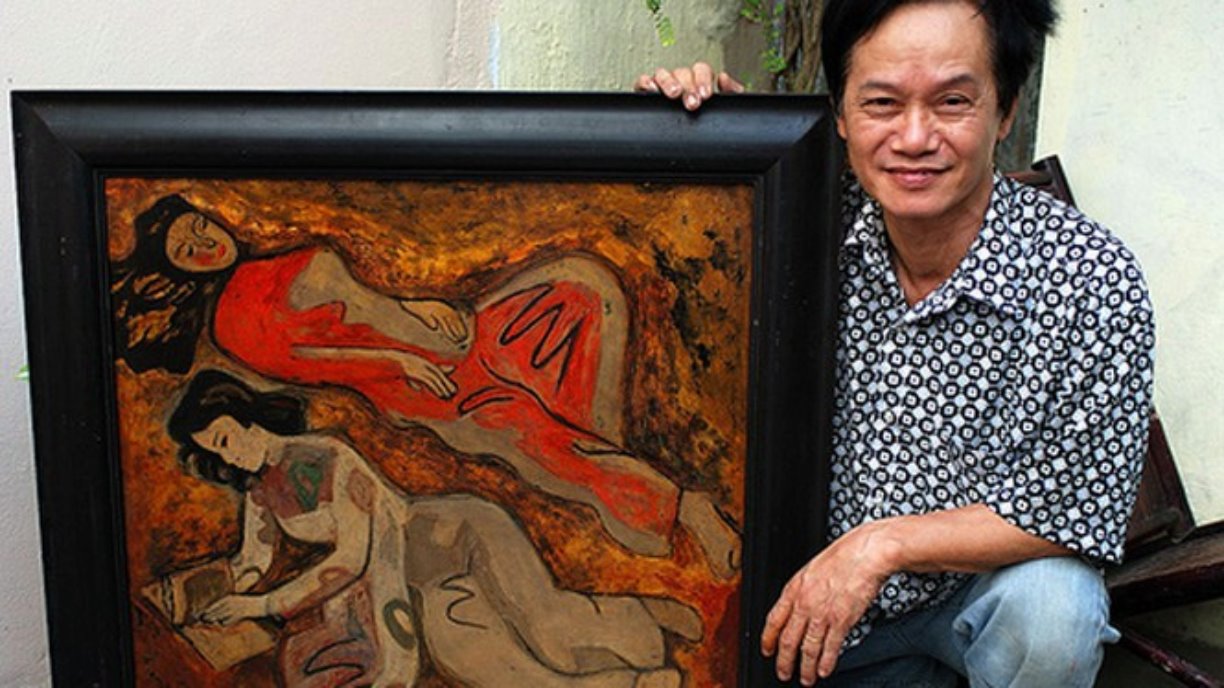
- From Nguyen Gia Tri to Nguyen Sang
A nation’s art history is the history of artworks and artists. The majority did not say anything! Geniuses themshelves are everything, make everything. Poet Che Lan Vien once wrote about Nguyen Du and Kieu Story: “Yes, with him, we have a past.” We can say the same about Nguyen Gia Tri with Vietnamese lacquer painting.
Honourably, with those masterpieces from 1937, Vietnamese fine arts have had achievement, a lacquer mark named Nguyen Gia Tri is equal to any artist who has ever been on this earth. .
The paintings about the graceful girls of the past, the burdened woman goes out from fairy tales, the goosebump atmosphere of the lake, on the cool lotus pond, the beautiful frame of beautiful flowers flowing down and down on the shoulders of the widow women. A humane and holy world on the faces of pure, sad women …
Nguyen Gia Tri repeatedly makes us flutter in the golden yellow colors, dazzling with joy, melancholy and taciturn in Then paint, puce. From the combination of dark, light, yellow, “devil” appears in a lustrous and clumsy manner. Reaching this vast illusion cannot be called anything other than the name: Masterpieces. But masterpieces by the lacquer witch Nguyen Gia Tri – This glory of Vietnamese lacquer.
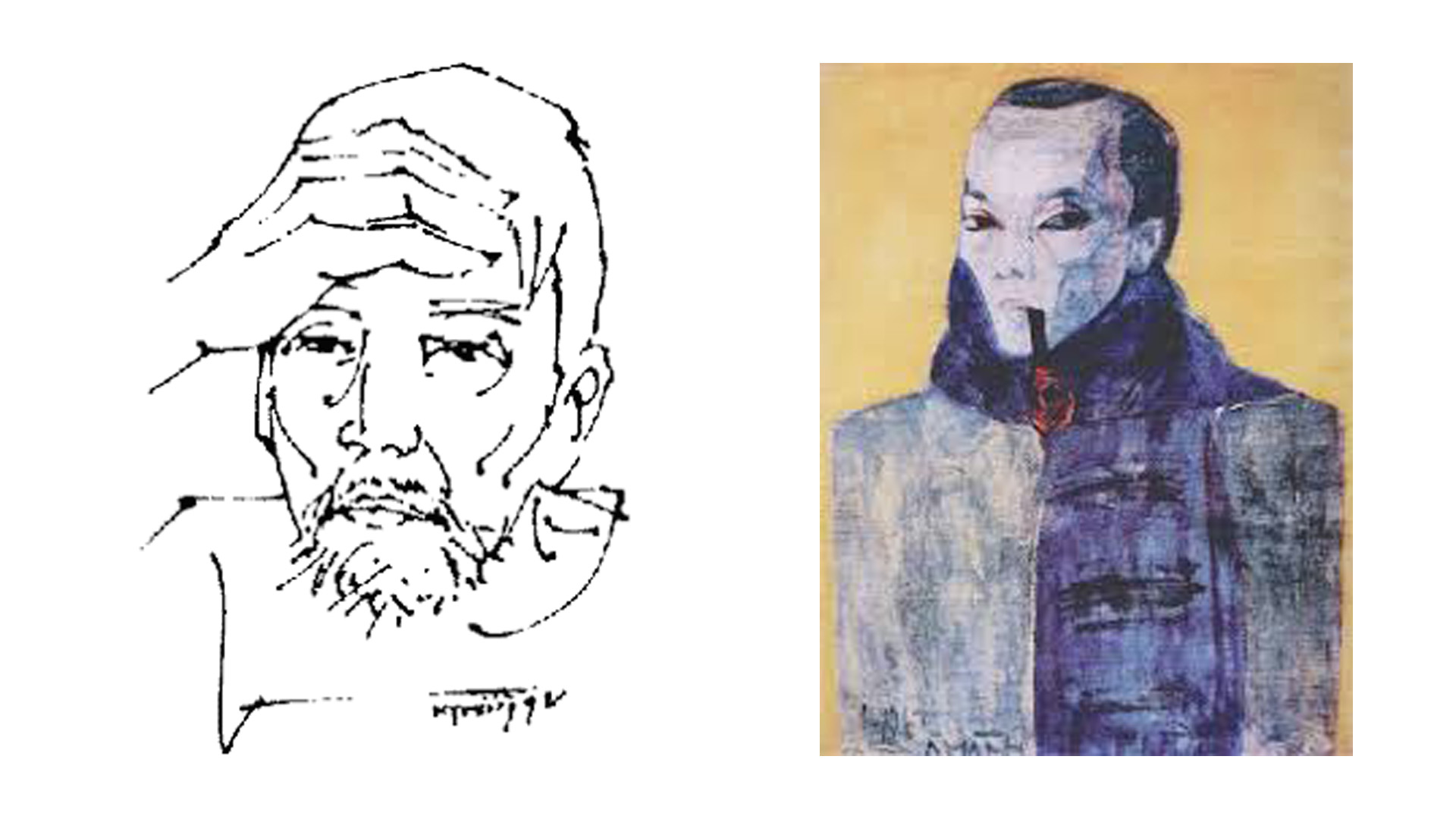
Nguyen Gia Tri started successfully in Tonkin – those artworks before 1954, later with his exile, his art earnestly misses the homeland, young women in the garden painted on the surface of the sizeable and liberal South .
Nguyen Sang is a southern painter who lived in the North – he once said, “There is no Hanoi, no Nguyen Sang”. Painter of revolution and resistance. The lacquer painting “Lunch Break” 1959 in harmony with blue glitter like pearls. The strange innovative green set of colors: “Rainy residence” 1960 was a great talent. Nguyen Sang’s masterpieces opened the impossibility of traditional Vietnamese lacquer art (cramped in tight palettes). Two works of painting “Learning Time” 1960 and “Adoption of the Party” 1963 were masterpieces.
For the first time in Nguyen Sang lacquer, to never repeat the “Study Time” painted in the classical European academic style, the depicted shadow style, play with close rationalism. Lacquer could depict from the cheekbone to the blood vessels floating on the muscular hands of the workers, to prove that, technically, lacquer is able to express despite all methods, however in emotional aspect, it is another story. Also, according to Nguyen Sang, while he was drawing, a few Russian painters who taught at Vietnam Fine Arts School (1960) visited and were extremely astounded.
The next large lacquer paintings such as “Pho Minh Pagoda” (1966), “Banana Garden” (1981), “In the Garden” (1983), the “Objects”, “Young Women”, his paint strokes kept freely dancing like a sword in a skilled magician’s hand. The last lacquer painting (1985) “The universe” to break up with the hard life, passion, Nguyen Sang still uses lacquer to call on love, the longing for wisdom and the real beauty in the universe. vast and infinite lives.
It is flawed, not mentioning Nguyen Tu Nghiem who just hurried to lead the work “New Year’s Eve” (1959), which is enough to brighten Vietnamese painting. The discerning man said that each of his leaf palms had a “ghost”. Paint, brown in “Ancient Dance”, in “Thanh Giong” is about a thousand years old. Stroke, paint dances “it” “sadness of god, devil’s cry” in an indescribable way, it’s soulful for a nation, so proud, regardless everything as a great nation.
Nguyen Gia Tri and Nguyen Sang, Nguyen Tu Nghiem, each sparkling a share of sky, using their artistic talents, leading lacquer from fine arts to the soul is so wonderful. With their talents, intellect, and thoughts, they also could bring the Eastern mystical spiritual realm into their work, therefore it is as mysterious as the masterpieces. This secret is exclusively in lacquer that other materials can only look up. His masterpieces in addition to the “positive” part also describe the “negative” part of the flickering, unreal illusion that burns in the heart of the painting, bringing with him the obsession that goes along with time.
Many talented painters dedicated to Vietnamese lacquer, such as To Ngoc Van in Viet Bac in 1944 once wrote, “The color of lacquer is deep, the deep echoes are vibrating to the bottom of the heart. There is no red oil paint stands next to a lipstick color without being pale – yet a black of oil paint stands next to black lacquer without flaking and inertness “and he called on world painting “to see the way of reform in lacquer. ” He has a beautiful artworks “Running from the enemy in the forest” in 1948. Afterwards Tran Van Can with the splendid “Autumn knitting”, then Nguyen Tien Chung, Huynh Van Gam, Duong Bich Lien … there are many successful artworks.
From Nguyen Gia Tri to Nguyen Sang, Vietnamese lacquer has been completed. Love of national material, intelligence, intense commitment to the end, their works have described every level of emotional joy and sadness of the artist, close to everyday life. Nguyen Gia Tri is gorgeous with royal court, Nguyen Sang and Nguyen Tu Nghiem are athletic, modern, heroic and sexy.
In the time of Nguyen Gia Tri, drawing a sketch was very difficult, he had to use a razor to follow the strokes, Nguyen Sang found a way to draw sketches with relief like breathing. The puce paint was glued, flowing suddenly and stood up, naturally like a rustic brush on a paper background. Nguyen Sang did not recognize painting as painting, and he and Nguyen Tu Nghiem were the few painters who were not involved in fine arts. The most artistic of the painters who use lacquer ever. The folk Tonkin aspect floats in many artworks.

III. Difficulties and advantages of current lacquer
Lacquer is originally from Asia, Vietnam. The successful artworks of the those masters mentioned before not only have enthusiasm, talent, methodology, but they are also extremely interested in Asianness in art, in the way of looking, thinking of the nation, on the stroke, the material to challenge with time.
A young Vietnamese artist in exile in Europe, in a recent letter to his country, wrote: “Asian art has become dominant since the 14th century. The Europeans, thanks to the development, have quickly gathered the quintessence of Asia, Africa and America for their own. Here they play a role of the discovery and we are discovered, then influence back to us. Therefore (in particular in painting) in Asia: Vietnam, China, Japan or India … the visual arts industry is nothing new, all parodied European art and sometimes clumsy. We have not moved forward, did not succeed them but have always followed and parodied, reusing their concepts to express an Eastern sentiment – That’s all, we only act to satisfy needs of the eye, then the spirit. But modern art is so different, first they think of ways to satisfy the needs of the spirit then the needs of the eyes. ”
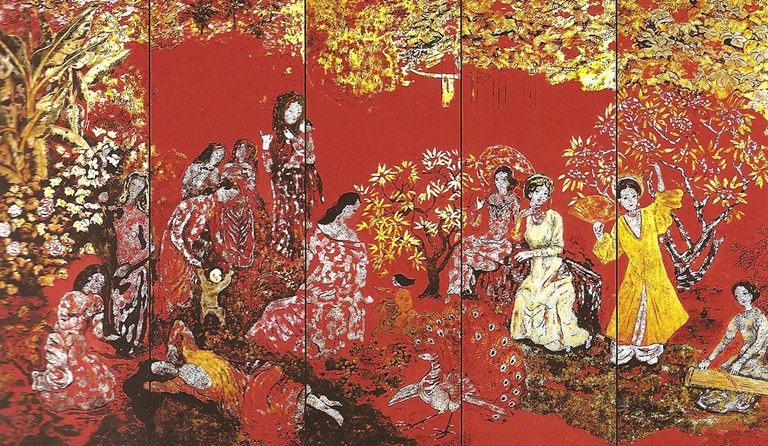
Recent lacquer lacks talented aritists and artworks – it’s the bitter truth of history. Someone said it was a period of “dreaming off”.
All the feats of the masters in bringing lacquer out of fine art! Fine arts and decoration are flooded with the cause of imported industrial paint. Inexpensive materials cannot stand the test of eyes and time. The false assessments of responsible people plus the courtship of the ignorant constitute a market of cheap and disappointing paintings.
But how unresponsive, Vietnam lacquer 21st century will overcome difficulties ahead. We have a brilliant past, a determined young artist class. The future may be brighter with the materials and enthusiasm to create high-class lacquer works.
Hanoi, March 10-3, 2002 Hoang Dinh Tai

